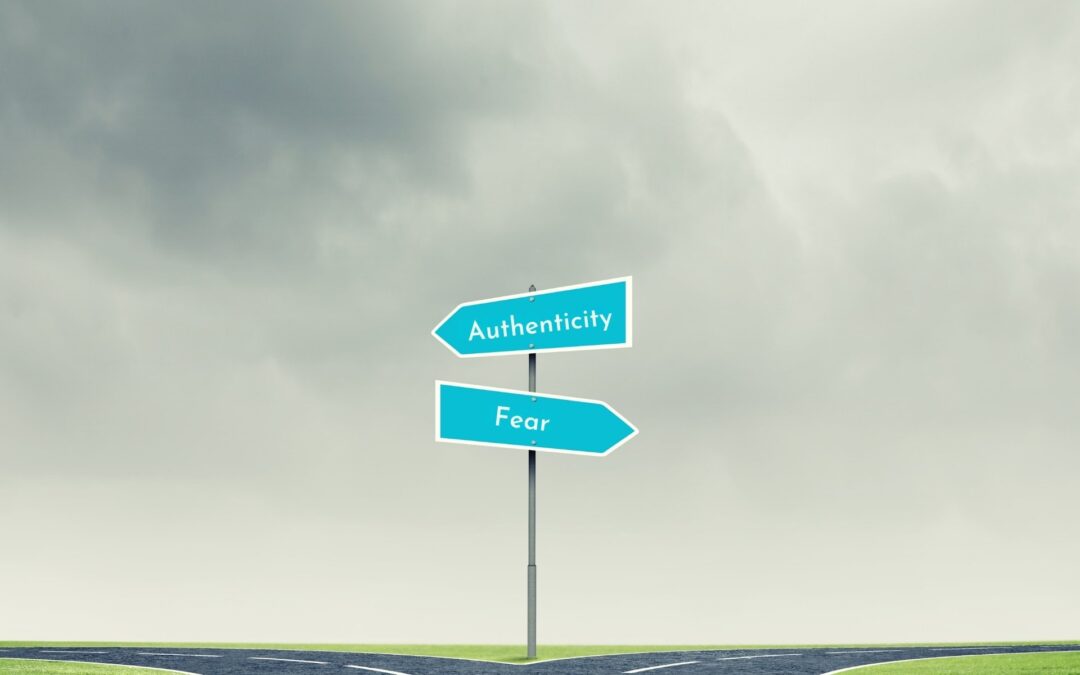As an OCD and anxiety therapist, I often find myself returning to the same conversation with clients: the pull between fear and authenticity. Fear can be so persuasive, convincing us that staying small and safe is the best option. I’ve seen how it keeps people from speaking their truth, taking risks, and living fully. Often times leading to a safer, yet less satisfying life. That’s why this theme is so central to my work. Helping people move from fear-based living to authenticity isn’t just about identifying and reducing anxiety—it’s about building an identity and prioritizing chosen values over fear.
Fear is one of the most primal human emotions. It evolved to keep us alive—to make us cautious around threats to our relationships, livelihood, and self. But in this modern, more complex life fear often shows up more frequently or louder than what is needed. It can keep us small, hesitant, and disconnected from the values we identify as a satisfying life.
When we act out of fear, we tend to choose safety over satisfaction. We stay in jobs that drain us because the unknown feels scarier than dissatisfaction. We silence our voices in conversations because the risk of rejection outweighs the pull of connection. Fear whispers convincing lies—If you try, you’ll fail. If you speak up, you’ll be judged. If you show who you really are, you’ll be rejected.
Authenticity, on the other hand, invites us to act in alignment with our values, beliefs, and desires—even when fear is present. That way we can open ourselves up to a satisfying life. Although, living authentically doesn’t mean you never feel afraid, and it definitely does not guarantee a risk-free life. Instead it helps you learn that you are more resilient that you may have originally thought. If the “big bad” does actually happen, you will be able to survive it.
Why do we get stuck in this fallacy of fear and safety? Fear is compelling because it offers predictability. If you play small, people might not notice you, but at least you won’t risk embarrassment. If you never pursue your creative idea, you can’t fail at it. If you avoid hard conversations, you might preserve surface-level peace. Fear convinces us that avoidance equals safety, but that “safety” comes at the cost of joy, connection, and growth.
Ironically, what feels safe in the moment often creates more long-term harm. That job you dread? Staying for security’s sake leads to burnout. That silence you keep in your relationships? It breeds distance and resentment. The authenticity you suppress? It leaks out eventually as frustration, bitterness, or even physical stress.
Moving From Fear to Authenticity
Shifting from fear-based decisions to authentic action is a practice, not a one-time choice. Here are a few ways to start:
- Notice when fear is in charge. Pay attention to your inner dialogue. Are you holding back because you don’t want to disappoint someone? What exactly are you scared of and, realistically, how likely is that to happen? If it did happen, realistically, how big would the effect be?
- Get clear on your values. When fear does show up, validate it, but pair it with what your values are. “I am scared of embarrassing myself, but I have a goal of making new friends”. It is hard to come up with your values on the spot.
- Take small authentic risks. Authenticity doesn’t mean leaping blindly. Start small: share an opinion in a meeting, wear something that expresses your style, set one boundary. Each act builds courage.
- Reframe failure. Fear tells us failure is fatal. But failure is just feedback. Authentic living embraces mistakes as part of the process rather than proof of inadequacy.
- Practice self-compassion. You won’t always get it right. Sometimes fear will win. Instead of criticizing yourself, notice it, reset, and try again.
Fear will always be part of life, but it doesn’t have to run the show. Authenticity invites you to acknowledge fear without obeying it. Every time you choose authenticity, you reclaim a little more of your power, integrity, and joy.

